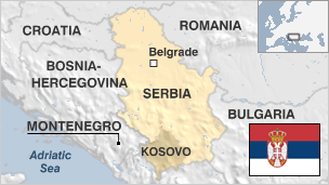
Facts and stats about Serbia
Serbia has only recently began to recover from the wounds, inflicted by the Yugoslavian wars in the last decade of the previous century. As the former seat of government, Serbia had the greatest federal authority, which the more economically developed republics to the North began to dispute at the beginning of 1980s, peaking with Slovenia and Croatia declaring independence in 1991, and Macedonia in 1992. While Slovenia escaped the aftermath with only ten days of war, and Macedonia with no wars at all, Croatia was less lucky - the estimated losses, mainly due to genocide in Croatia and Bosnia&Hercegovina in the years 1991-1994, amount to 140,000. After the conclusion of Croatian War for Independence, the violence moved to Kosovo and ethnical cleansing of muslim Albanians, resulting in hundreds of thousands displaced Albanians in Macedonia in Albania. The United Nations took control over Kosovo in 1999, which eventually gained independence in 2008, but still isn’t recognized by Serbia as an independent country. The population of Serbia in 2012 was 7.22 millions, most of which (85%) are Orthodox-Christian. The nation continues to lag behind in economic development: GDP was $5,189 in 2012 and life expectancy is still bellow European average (72 years for men and 78 years for women). Most of all, the relations between Croatia and Serbia are tense to this day, resulting even in division of the language of Serbo-Croatian to Serbian, Croatian, Montenegrin, and Bosnian.
- Agriculture 39
- Background 11
- Conflict 11
- Cost of living 53
- Crime 37
- Culture 20
- Economy 628
- Education 405
- Energy 103
- Environment 91
- Geography 41
- Government 105
- Health 145
7.24 million
Population. Ranked 98th in 2013.
$5,189.58
GDP per capita. Ranked 90th in 2012.
